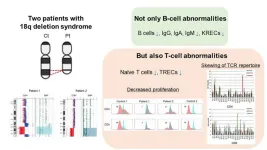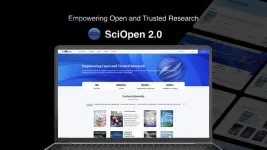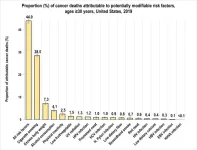(Press-News.org) Images
A battery component innovation could help keep power delivery high when electric aircraft land with low charge, according to a study led by Lawrence Berkeley National Laboratory with expertise from the University of Michigan.
The research provides a solution to a problem identified in 2018 in a study led by Venkat Viswanathan, a professor of aerospace engineering at U-M and a coauthor of the new work published in Joule.
"Both takeoff and landing require high power, and landing is more challenging because you’re not fully charged," Viswanathan said. "To get high power you have to bring all the resistances down. Anything that affects the ability to deliver that power."
The team emphasized that this is distinct from the needs of EV batteries, which mainly need to maintain their ranges.
"In an electric vehicle, you focus on capacity fade over time,” said Youngmin Ko, a postdoctoral researcher at Berkeley Lab’s Molecular Foundry and lead author of the Joule study. “But for aircraft, it's the power fade that's critical—the ability to consistently achieve high power for takeoff and landing."
Both capacity fade and power fade typically occur when lithium ions can no longer move easily in and out of the electrodes. While the key for capacity fade is the quantity of lithium ions that can move between the electrodes, the main factor for power fade is speed. The problem is that corrosion builds up on the electrodes, taking up space that could have housed lithium ions and making it harder for the lithium to reach available spaces.
Under the leadership of Brett Helms, corresponding author of the study and a senior staff scientist at Berkeley Lab’s Molecular Foundry, the team explored the interactions among the electrodes and electrolyte using an approach borrowed from biology. In studies of life, the field generally called "omics" looks for clues in the constituents of cells—what genes are being read, what proteins are being made, and so on.
In this case, the team tried different electrolyte chemistries, looking at subtle changes that occurred within the electrolyte at different locations in the battery during charging and discharging. Prior research has typically attributed power fade to problems arising at the battery’s negative side, as lithium metal is very reactive.
However, the team observed that damaging molecules were forming near the positive side—nickel-manganese-cobalt oxide in this case. Reacting with those molecules caused the particles of the positive electrode to crack and corrode over time, hindering the movement of lithium and reducing power delivery.
"It was a non-obvious outcome," Ko said. "We found that mixing salts in the electrolyte could suppress the reactivity of typically reactive species, which formed a stabilizing, corrosion-resistant coating."
The company 24M (Cambridge, MA), then built a test cell with this chemistry and sent it to And Battery Aero (Palo Alto, CA)—a startup that Viswanathan co-founded with his former PhD student Shashank Sripad, a co-author of this study and the one from 2018.
Sripad tested the cell by repeatedly drawing power from it in a realistic sequence of takeoff, flight and landing, as if the cell were part of a complete battery module powering an electric aircraft. When compared to conventional batteries, the new cell maintained the power-to-energy ratio needed for electric flight for four times longer.
"Heavy transport sectors, including aviation, have been underexplored in terms of electrification," Helms said. “Our work redefines what's possible, pushing the boundaries of battery technology to enable deeper decarbonization."
Next, 24M will build a complete battery that And Battery Aero will test on a propeller stand, running the propeller through the flight sequence repeatedly. Then, next year, the team intends to attempt to perform an electric flight test with those batteries.
The team—which includes scientists at the University of California, Berkeley—also plans to expand the use of omics in battery research, exploring the interactions of various electrolyte components to further understand and tailor the performance of batteries for current and emerging use-cases in transportation and the grid.
The Molecular Foundry is a DOE Office of Science user facility at Berkeley Lab.
This work was supported by DOE’s Advanced Research Projects Agency-Energy (ARPA-E) and DOE’s Office of Science (Basic Energy Sciences).
Viswanathan and Sripad have a financial interest in And Battery Aero.
Study: "Omics-enabled understanding of electric aircraft battery electrolytes" (DOI: 10.1016/j.joule.2024.05.013)
Modified from an article by William Ferguson for Berkeley Lab.
END
Electric aviation: Batteries that stay strong for the flight duration
Borrowing methods from biology, a team of scientists and engineers designed and tested an electrolyte that keeps battery power delivery high, cycle after cycle
2024-07-11
ELSE PRESS RELEASES FROM THIS DATE:
Uncovering late-onset combined immune deficiency in chromosome 18q deletion syndrome
2024-07-11
Tokyo Medical and Dental University (TMDU) researchers have discovered that patients with 18q deletion syndrome can experience both cellular and humoral immunodeficiency
Tokyo, Japan – Chromosome 18q deletion (18q del) syndromeis a rare genetic condition disorder, affecting approximately 1 in 40,000 to 55,000 individuals, caused by the deletion of genetic material on the long arm of chromosome 18. This genetic anomaly disrupts normal growth and development, and critically, can impair the immune system's functionality. Patients with 18q del syndrome often exhibit humoral immunodeficiency or a common ...
SciOpen, an international digital publishing platform for STM journals, unveils new updates
2024-07-11
On June 30, 2024, SciOpen 2.0 was officially launched. Developed by Tsinghua University Press, SciOpen initially made its debut in June 2022 as an international digital publishing platform for STM journals. After two years of global operation and continuous iterative upgrades, SciOpen 2.0 has fully embraced the best practices of mainstream publishing models. SciOpen has completed a comprehensive upgrade of its interactive system design and has integrated advanced large-model AI reading capabilities, marking a significant leap forward in its functionality.
These updates steer SciOpen towards ...
JMIR Bioinformatics and Biotechnology is inviting submissions for a new theme issue titled “Artificial Intelligence in Oncology”
2024-07-11
(Toronto, July 11, 2024) JMIR Publications invites submissions to a new theme issue titled “Artificial Intelligence in Oncology” in its premier open access journal JMIR Bioinformatics and Biotechnology indexed in PubMed Central and PubMed, SCOPUS, Sherpa/Romeo, DOAJ and EBSCO/EBSCO Essentials.
Artificial intelligence (AI) has the potential to revolutionize oncology by enhancing diagnostic accuracy, personalizing treatment plans, predicting patient outcomes, and accelerating drug discovery. Researchers, clinicians, and industry experts are invited ...
New study finds 40-percent of cancer cases and almost half of all deaths in the US linked to modifiable risk factors
2024-07-11
A new study led by researchers at the American Cancer Society (ACS) finds four in 10 cancer cases and about one-half of all cancer deaths in adults 30 years old and older in the United States (or 713,340 cancer cases and 262,120 cancer deaths in 2019) could be attributed to modifiable risk factors, including cigarette smoking, excess body weight, alcohol consumption, physical inactivity, diet, and infections. Cigarette smoking was by far the leading risk factor, contributing to nearly 20% of all cancer cases and 30% of all cancer deaths. The findings are ...
Pathogen prioritization for wastewater surveillance ahead of the Paris 2024 Olympic and Paralympic Games, France
2024-07-11
The study by researchers from the French national public health institute aimed to identify priority pathogens that could be suitable for wastewater surveillance (WWS) during the Paris 2024 Olympic and Paralympic Games taking place from 26 July to 11 August and 28 August to 8 September, respectively. The pathogens were evaluated using a Delphi method which integrated evidence from peer-reviewed publications and expert opinion.
WWS has become more prominent due to its role during the COVID-19 pandemic. As a non-intrusive, cost-effective surveillance tool, WWS offers ...
Bacteria form glasslike state
2024-07-11
Dense E.coli bacteria have several similar qualities to colloidal glass, according to new research at the University of Tokyo. Colloids are substances made up of small particles suspended within a fluid, like ink for example. When these particles become higher in density and more packed together, they form a “glassy state.” When researchers multiplied E.coli bacteria within a confined area, they found that they exhibited similar characteristics. More surprisingly, they also showed some other unique properties not typically found in glass-state materials. This study contributes to our understanding of glassy “active matter,” a relatively new field of ...
Prestigious MERIT grant funds research on how the immune system can banish HIV
2024-07-11
Weill Cornell Medicine has received $4.2 million to study how the immune system in some people infected with HIV can keep the virus under control, which could lead to novel therapeutic strategies for thwarting or eliminating HIV. Dr. Brad Jones, associate professor of immunology in medicine in the Division of Infectious Diseases at Weill Cornell Medicine, was awarded a MERIT grant from the National Institute for Allergy and Infectious Diseases (NIAID) at the National Institutes of Health (NIH).
The “Method for Extending Research in Time” (MERIT) grant provides ...
Research reveals novel CARS E795V mutation as cause of inherited Parkinson's disease
2024-07-11
According to Science Alert, neuroscientists from Johns Hopkins University have recently discovered a new treatment for Parkinson's disease using an FDA-approved cancer drug. A recent study published in Neuroscience Bulletin reveals the genetic cause of Parkinson's disease. The study discovered that a mutation in the Cysteinyl-tRNA synthetase (CARS) gene (c.2384A>T; p.Glu795Val; E795V) is responsible, offering a new path for prevention and control of the disease. This research was conducted by a team led by Zhang Jianguo, including researcher ...
Narcissism decreases with age, study finds
2024-07-11
People tend to become less narcissistic as they age from childhood through older adulthood, according to a study published by the American Psychological Association. However, differences among individuals remain stable over time -- people who are more narcissistic than their peers as children tend to remain that way as adults, the study found.
“These findings have important implications given that high levels of narcissism influence people’s lives in many ways -- both the lives of the narcissistic individuals themselves and, maybe even more, the lives of their families and friends,” said lead author Ulrich Orth, PhD, of the University of Bern in Switzerland.
The ...
Scientists call for ‘major initiative’ to study whether geoengineering should be used on glaciers
2024-07-11
A group of scientists have released a landmark report on glacial geoengineering—an emerging field studying whether technology could halt the melting of glaciers and ice sheets as climate change progresses.
The white paper represents the first public efforts by glaciologists to assess possible technological interventions that could help address catastrophic sea-level rise scenarios.
While it does not endorse any specific interventions, it calls for a “major initiative” in the next decades to research which, if any, interventions could and should be ...
LAST 30 PRESS RELEASES:
SIMJ announces global collaborative book project in commemoration of its 75th anniversary
Air pollution exposure and birth weight
Obstructive sleep apnea risk and mental health conditions among older adults
How talking slows eye movements behind the wheel
The Ceramic Society of Japan’s Oxoate Ceramics Research Association launches new international book project
Heart-brain connection: international study reveals the role of the vagus nerve in keeping the heart young
Researchers identify Rb1 as a predictive biomarker for a new therapeutic strategy in some breast cancers
Survey reveals ethical gaps slowing AI adoption in pediatric surgery
Stimulant ADHD medications work differently than thought
AI overestimates how smart people are, according to HSE economists
HSE researchers create genome-wide map of quadruplexes
Scientists boost cell "powerhouses" to burn more calories
Automatic label checking: The missing step in making reliable medical AI
Low daily alcohol intake linked to 50% heightened mouth cancer risk in India
American Meteorological Society announces Rick Spinrad as 2026 President-Elect
Biomass-based carbon capture spotlighted in newly released global climate webinar recording
Illuminating invisible nano pollutants: advanced bioimaging tracks the full journey of emerging nanoscale contaminants in living systems
How does age affect recovery from spinal cord injury?
Novel AI tool offers prognosis for patients with head and neck cancer
Fathers’ microplastic exposure tied to their children’s metabolic problems
Research validates laboratory model for studying high-grade serous ovarian cancer
SIR 2026 delivers transformative breakthroughs in minimally invasive medicine to improve patient care
Stem Cell Reports most downloaded papers of 2025 highlight the breadth and impact of stem cell research
Oxford-led study estimates NHS spends around 3% of its primary and secondary care budget on the health impacts of heat and cold in England
A researcher’s long quest leads to a smart composite breakthrough
Urban wild bees act as “microbial sensors” of city health.
New study finds where you live affects recovery after a hip fracture
Forecasting the impact of fully automated vehicle adoption on US road traffic injuries
Alcohol-related hospitalizations from 2016 to 2022
Semaglutide and hospitalizations in patients with obesity and established cardiovascular disease
[Press-News.org] Electric aviation: Batteries that stay strong for the flight durationBorrowing methods from biology, a team of scientists and engineers designed and tested an electrolyte that keeps battery power delivery high, cycle after cycle





